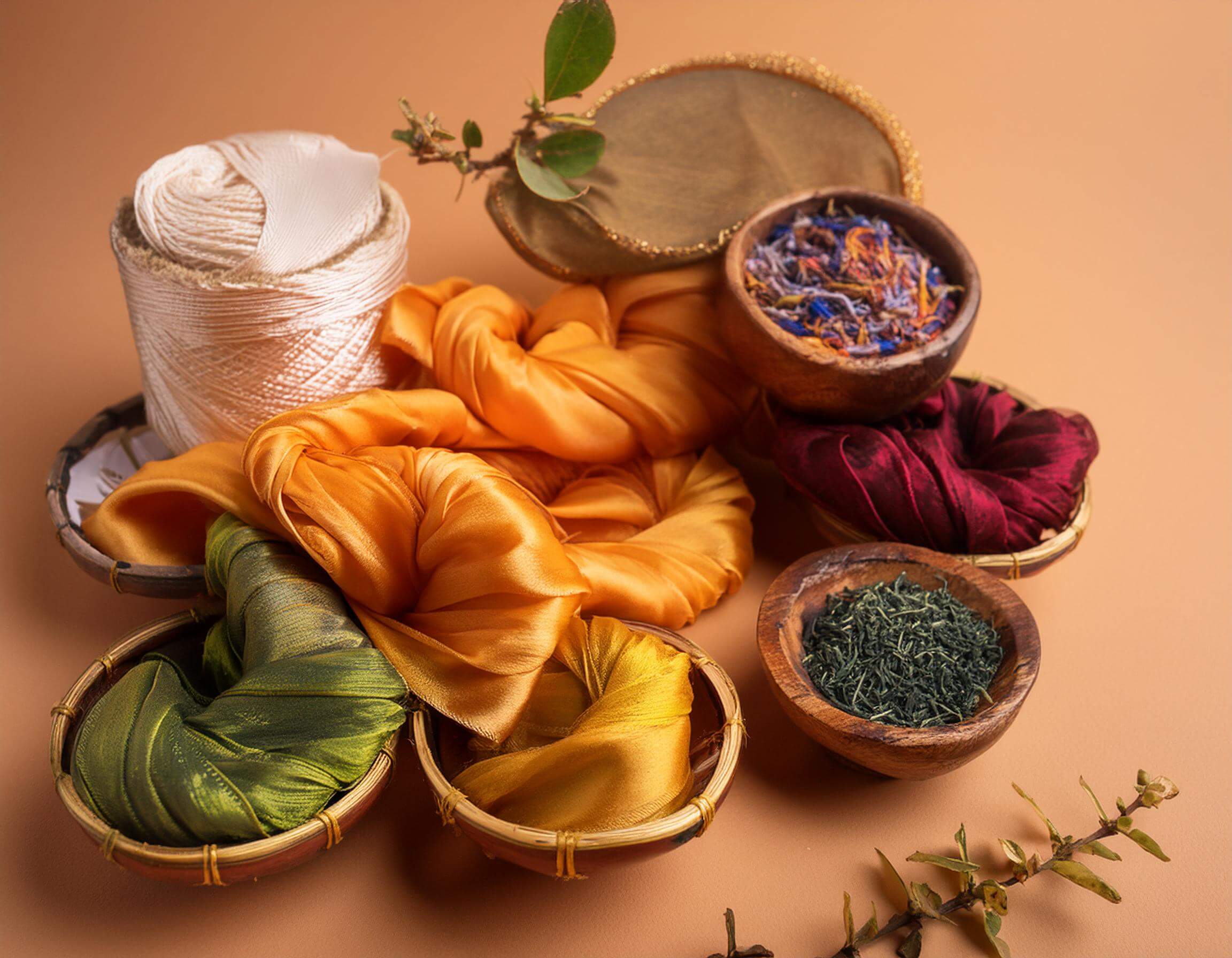Rediscovering the Magic of Natural Dye in the Modern Era
Natural dye, these two words hold centuries of tradition, color, and culture. From early civilizations in Asia and Africa to indigenous cultures in South America, Natural dye was once the cornerstone of artistic expression and textile beauty. In today’s world of mass production and synthetic chemicals, the charm and sustainability of natural dye are making a powerful comeback. Artisans, environmentalists, and designers are all turning to natural dye as a solution that blends ecological responsibility with artistic richness. Natural dye, derived from plants, roots, and insects, is not only safer for the planet but also more vibrant and unique than synthetic alternatives. With increased awareness of environmental degradation, the fashion and craft industries are now embracing natural dye as a sustainable choice. Among the most treasured ingredients in natural dye is mimosa hostilis – a botanical powerhouse that delivers deep, rich hues while staying eco-friendly. Natural dye is no longer a forgotten tradition; it’s a modern-day revolution with ancient roots.
The Historical Importance of Natural Dye Traditions
Throughout human history, the use of natural dye has defined social status, cultural identity, and even religious expression. Ancient Egypt, India, and China were pioneers in mastering natural dye techniques, extracting brilliant colors from indigo, madder root, and turmeric. Textiles dyed with natural dye were not just decorative—they symbolized wealth, power, and spirituality. Natural dye played a key role in ancient rituals, ceremonies, and even trade, as dyed fabrics became valuable commodities. Reviving these ancient practices today is more than nostalgia—it’s a commitment to cultural preservation and environmental ethics. The process of creating natural dye from raw plant materials brings us closer to nature, teaching patience, respect for resources, and the value of craftsmanship.
Mimosa Hostilis: The Star Ingredient in Natural Dye
Among the many botanical sources of natural dye, mimosa hostilis stands out for its exceptional properties. This root bark, native to South America, produces a stunning range of purples, browns, and reds depending on the method of extraction and mordanting. Natural dye made from mimosa hostilis is not only colorfast but also environmentally gentle, making it an ideal choice for sustainable artisans. Mimosa hostilis embodies the essence of natural dye—earth-derived, powerful, and versatile. When combined with other plant-based materials, it opens endless possibilities for creating intricate patterns and layered shades. The tannins in mimosa hostilis enhance fabric bonding, making it one of the most reliable sources for long-lasting natural dye results.
Sustainable Benefits of Natural Dye Over Synthetic Alternatives
Modern industrial dyeing processes often involve toxic chemicals, excessive water use, and pollution. In contrast, natural dye offers a cleaner, greener method of textile coloring. Natural dye techniques require less water and utilize biodegradable materials, reducing environmental harm. Natural dye also eliminates exposure to harmful substances for both artisans and end-users. With growing concerns about skin allergies and chemical sensitivities, garments colored with natural dye are seen as safer, especially for children and those with sensitive skin. Mimosa hostilis, in particular, provides a vibrant hue without synthetic additives, reinforcing the sustainable appeal of natural dye. Choosing natural dye is not just an aesthetic decision—it’s a commitment to the health of people and the planet.
The Art and Science of Natural Dyeing Techniques
Working with natural dye is both an art and a science. Each step, from harvesting plants to preparing the fabric, requires precision and creativity. Natural dye is influenced by variables like temperature, pH, fiber type, and mordant selection. Mimosa hostilis is especially responsive to these variables, producing different tones depending on technique. Artists who work with natural dye must develop a deep understanding of materials, developing recipes and documenting results. Natural dye processes often include simmering the bark, straining the liquid, pre-mordanting the fabric, and immersing it in dye baths for hours or even days. The results are one-of-a-kind creations that reflect both nature’s power and human ingenuity. Through the use of natural dye, makers reconnect with slower, more thoughtful production methods.
Supporting Ethical Craftsmanship with Natural Dye
The rise of natural dye is also empowering small-scale farmers, indigenous communities, and local artisans. Ethical sourcing of materials like mimosa hostilis ensures fair trade practices and helps preserve traditional knowledge. By choosing natural dye, consumers support a global network of sustainable livelihoods. Many artisans pass down natural dye skills through generations, and each piece tells a story rooted in culture and geography. Natural dye production encourages biodiversity, as it often involves cultivating native plants and preserving ecosystems. Mimosa hostilis, when harvested responsibly, can regenerate quickly, making it a renewable source of color. Investing in natural dye goods means investing in people, culture, and the earth.
Applications of Natural Dye in Contemporary Design
Designers across industries are embracing natural dye for its unique aesthetic and sustainable edge. From fashion to interior décor, natural dye has become a symbol of mindful luxury. Natural dye fabrics offer subtle color variations that are impossible to replicate with synthetic dyes, giving each item a handmade, organic feel. Natural dye is also being used in paper making, leather crafting, and even food packaging. Mimosa hostilis-based dyes have gained popularity among eco-conscious brands seeking rich, earthy tones that align with their values. Whether it’s a scarf dyed with mimosa hostilis or a hand-printed wall hanging, natural dye products bring warmth and authenticity to modern spaces.
The Future of Natural Dye: Innovation Meets Tradition
As technology evolves, so does the potential for scaling natural dye methods without compromising their essence. Innovations in plant cultivation, fermentation, and extraction are improving the efficiency and accessibility of natural dye. Mimosa hostilis continues to be researched for its dyeing properties and regenerative growth cycle. Collaborations between scientists, designers, and traditional dyers are unlocking new ways to enhance colorfastness and reduce waste. The future of natural dye lies in education, investment, and creative experimentation. Schools, workshops, and online platforms are spreading knowledge about natural dye, encouraging more people to engage with this ancient art form. With the help of mimosa hostilis and other natural sources, the revival of natural dye is not just a trend—it’s a lasting transformation.
Conclusion: Embracing the Beauty and Responsibility of Natural Dye
Natural dye is more than a method—it’s a movement. As we rediscover the potential of plants like mimosa hostilis, we are reminded of nature’s incredible gift for color and sustainability. Choosing natural dye connects us to the earth, to ancient wisdom, and to a better future. The rich tones of mimosa hostilis, the textures of hand-dyed fabrics, and the conscious choices behind every creation all speak to the power of natural dye. In a world hungry for authenticity and ecological balance, natural dye is a radiant solution that honors both artistry and responsibility. Let us continue to celebrate and spread the magic of natural dye—for the love of color, culture, and the planet.



